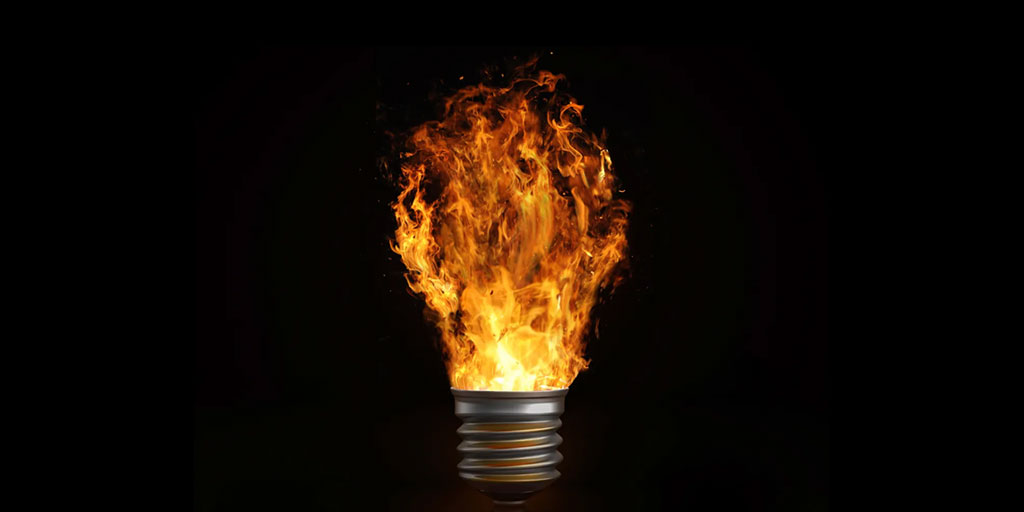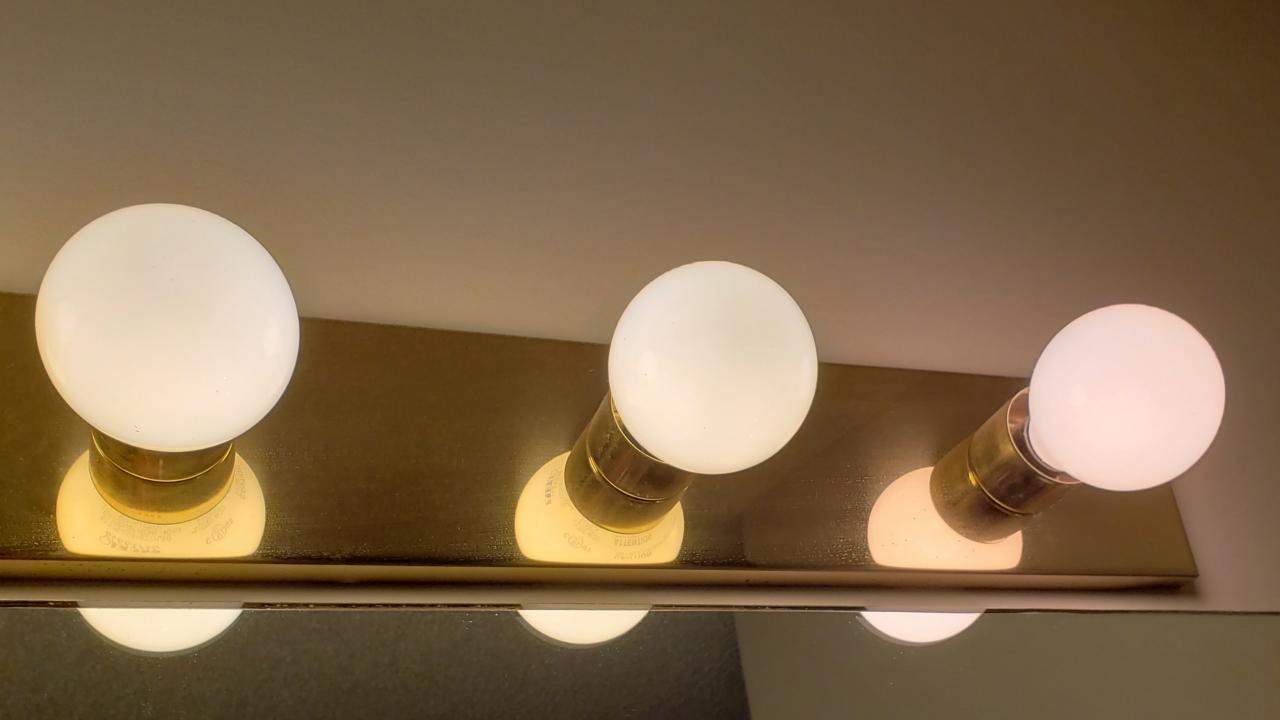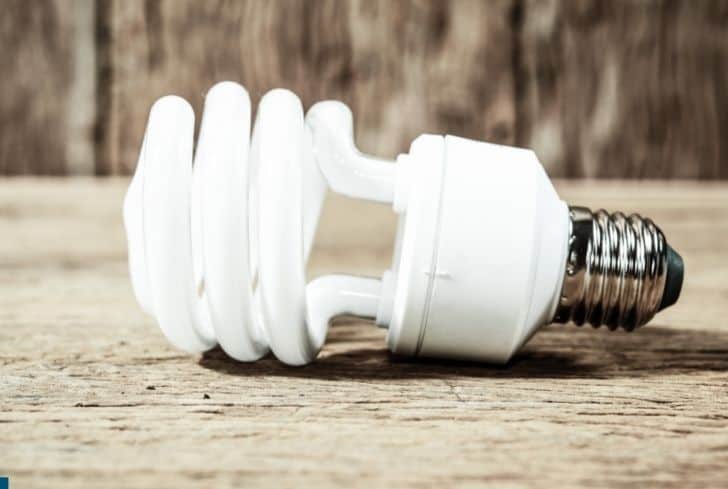Have you ever wondered how hot light bulbs get? Well, wonder no more! Here's a quick rundown of how hot light bulbs can get, and why they don't usually pose a fire hazard. A light bulb is an electric lamp that uses a filament wire to produce light. The wattage of the bulb determines how much heat it emits.
How much heat do light bulbs give off?

Because a 60-watt-equivalent LED bulb consumes 9 watts of electricity, we may infer that an incandescent lamp generates at least 51 watts of heat energy for every 9-watt light output. That’s more than 5 times the heat output of an LED! To give you a sense of how much heat that is, a single 100-watt light bulb emits about 1,500 BTUs per hour. That’s enough to raise the temperature of a standard-sized room by about 10°F in one hour!
While the heat generated by a light bulb may be significant, it’s important to keep in mind that most bulbs are designed to operate safely within a specific temperature range. For example, incandescent bulbs have a maximum operating temperature of around 1,400°F. At these temperatures, the filament wire is under tremendous stress but does not vaporize or melt.
The amount of heat a light bulb gives off also depends on how long it’s been turned on. The longer a bulb is on, the hotter it will get. This is why it’s important to follow the manufacturer’s recommended operating time to avoid overheating and potential fire hazards. In general, LED bulbs are much cooler than incandescent bulbs, making them safer to operate and less likely to cause fires.
Do regular light bulbs get hot?
The high temperatures of incandescent and CFL bulbs are due to the inefficient release of energy as heat rather than light. Proprietary tests show that a 100W incandescent light bulb has a surface temperature of 335.4 degrees Fahrenheit, while a CFL light bulb burns at 179.2 degrees Fahrenheit and an LED bulb only reaches 87.2 degrees Fahrenheit.
In fact, the range of heat output for an LED is so low that it poses little to no fire hazard. On the other hand, CFL and incandescent bulbs pose a greater risk of starting a fire if they come into contact with flammable materials like paper or fabric.
Depending on the light bulbs' usage, their heat degree also changes. The heating degree of a light bulb also depends on if the light is being used for indoor or outdoor purposes. For example, flood lights emit more heat than standard bulbs because they are meant to light up large areas. While light bulbs give off heat, it is not usually enough to pose a fire hazard. However, it is important to be aware of the potential risk and take precautions accordingly.

How hot do light bulbs get?
The answer to this question depends on the type of light bulb and how long it has been turned on. In general, LED bulbs are much cooler than incandescent bulbs, making them safer to operate and less likely to cause fires. CFL and incandescent bulbs pose a greater risk of starting a fire if they come into contact with flammable materials like paper or fabric.
The amount of light output also determines how much heat a bulb emits. The longer a bulb is on, the hotter it will get. This is why it’s important to follow the manufacturer’s recommended operating time to avoid overheating and potential fire hazards.
While light bulbs give off heat, it is not usually enough to pose a fire hazard. However, it is important to be aware of the potential risk and take precautions accordingly. For example, when changing a light bulb, be careful not to touch the hot glass with your bare skin. If you have any further questions about the safety of light bulbs, please consult a qualified electrician.
What affects how hot the light bulb could get?
There are some most common factors that affect how hot a light bulb could get, such as the following.
Bulb type:
As we have already mentioned, different types of light bulbs produce different levels of heat. For example, CFL and incandescent bulbs emit more heat than LED bulbs. At the same time, when choosing an LED bulb, you should also consider its wattage. The higher the wattage, the more heat the bulb will produce.
Bulb size:
Those individuals who are looking for a cool-running light bulb should opt for a smaller bulb. The larger the bulb, the greater its surface area and, as a result, the more heat it will produce. So, how hot your light bulb will get also depends on its size.
Operating time:
Another factor that affects how hot a light bulb could get is the length of time it is turned on. The longer the bulb is on, the hotter it will become. This is why it’s important to follow the manufacturer’s recommended operating time to avoid overheating and potential fire hazards.

Location:
The location of the light bulb also plays a role in how hot it could get. If the bulb is placed in a well-ventilated area, the heat will dissipate more quickly and the bulb will not get as hot. On the other hand, if the bulb is placed in a confined space, the heat will build up and the bulb will become hotter.
Bulb age:
It is obvious that the newer your bulb is, the cooler it will run. As light bulbs age, their filaments become thinner and less able to withstand the heat of operation. This is why it’s important to regularly check your light bulbs and replace them as needed.
Material:
In case your light bulb is made of glass or any other heat-resistant material, it will be able to dissipate heat more effectively and will not get as hot. The cooler-running light bulbs are usually made of ceramic or porcelain.
Type of socket:
No matter what your bulb is, the socket type also matters. If you have an old-fashioned light bulb socket, it is likely that your bulb will get hotter because the socket does not allow for proper ventilation. The newer types of sockets, on the other hand, are designed to provide better ventilation and prevent overheating.
To sum up, how hot a light bulb could get depends on many factors, such as its type, size, operating time, location, and age. It is important to be aware of these factors in order to choose the right light bulb for your needs and avoid potential fire hazards.
Are hot bulbs dangerous?
When your house is filled with the smell of something burning, your first instinct is to find the source of the fire. But what if the source of the fire is a light bulb?
While light bulbs give off heat, it is not usually enough to pose a fire hazard. However, it is important to be aware of the potential risk and take precautions accordingly. For example, when changing a light bulb, be careful not to touch the hot glass with your bare skin. If you have any further questions about the safety of light bulbs, please consult a qualified electrician.

Your children`s room would be a great place for an LED bulb. But if it has bulbs that heat very quickly, it could be a fire hazard. In short, while light bulbs may give off heat, they are not typically hot enough to pose a fire hazard. However, as with any electrical appliance, it is important to take precautions and be aware of the potential risks. If you have any further questions about the safety of light bulbs, please consult a qualified electrician.
In case you have a light bulb outdoors that heats too easily, we advise you to take it down and bring it inside. Also, we advise not to use any kind of string or anything else that can conduct electricity to heat the bulb too easily as this can be a fire hazard.
How can you keep the lighting cool?
If you spotted that the light bulb heats too much, there are some hints on how to keep it cool:
- Use a bigger light bulb, as the bigger the surface of the light bulb, the more heat it will dissipate.
- If you can’t use a bigger bulb, try a different type of light bulb that doesn’t heat up as much. For example, LED bulbs tend to run cooler than incandescent bulbs.
- Make sure the light bulb is in a well-ventilated area so that the heat can dissipate more quickly.
- Check the manufacturer’s recommended operating time and make sure not to exceed it.
- Regularly check your light bulbs and replace them as needed.
- If you use halogen bulbs, don’t touch them with your bare hands when they are turned on as this can cause them to overheat.
As you can see, there are a few things you can do to keep your light bulbs from getting too hot. By following these tips, you can help prevent any potential fire hazards.
Does using a dimmer help you cool the bulb?
You can also use a dimmer to ensure that the wattage is as low as possible, which will also help you stay warm without providing much light. The fact is that dimmers work in such a way that they lower the voltage that is sent to the light bulb. So, by using a dimmer, you are in fact lowering the temperature of the filament inside the light bulb, and as a result, the light bulb will not get as hot.

Can your car be damaged by a hot light bulb?
If your headlight or interior light is out, you may be tempted to replace the light bulb with a higher wattage bulb. However, this can be a fire hazard as the higher wattage bulb will get hotter than the original bulb and could potentially damage your car. In such a case, it is best to consult a qualified mechanic to replace the light bulb for you.
Conclusion
If you wonder how hot light bulbs get, the answer is: not as hot as you may think. However, it is still important to take precautions and be aware of the potential risks. If you have any further questions about the safety of light bulbs, please consult a qualified electrician. Thanks for reading!